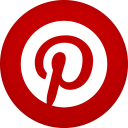1. Watch
Pinterest is a social network which allows you to share and comment on visual material, which could be photographs, sketches, videos or web pages. Like a virtual scrapbook, but very public, you can collate the items that you love. Pinterest can also be a great tool for use in education. It is great for organising vast quantities of information and brainstorming ideas. The visual nature of Pinterest makes it particularly suited to engaging learners.
3 Reasons to use Pinterest in the Classroom:
- Pinterest is an excellent tool for creative brainstorming – learners can easily search for ideas in their topic area and gain inspiration from the resources and colourful images they find. This works especially well for visual projects. Students can pin the kind of work they’d like to emulate in shape, content or form, as well as create a portfolio of the artists and designers that inspire them.
- Pinterest offers an innovative way to showcase learners work in the form/ability in the form of a Digital Portfolios or Resume. Whenever learners turn in impressive work, teachers/trainers can suggest that they pin it to the board.
- Pinterest is a useful tool which can allow for Differentiated Learning – trainers can create Pinterest boards for novice and expert learners to differentiate your digital content/training materials.
Here are just a few of the possibilities with Pinterest:
- Compile content, including educational video
- Organise and store ideas
- Connect and comment on learners’ work
- Make connections with other teachers and get ideas for future projects
- Create group projects: community boards can be perfect for collaborative projects
2. Read
Interested in finding out more about Pinterest and how you can use it your class or lecture room? We have completed a pedagogic assessment of this tool which details its strengths and weaknesses based on its potential for innovative teaching strategies.
3. Learn From Others
We collected and created some examplar videos which include tutorials, case studies of educators using this tool and more. Click to watch and learn.
4. Get Started with Pinterest
- To set up an account, go to www.pinterest.com – enter your email address and create a password.
- Next Pinterest will suggest a number of topics that may be of interest to you. Select a few from what’s presented, or search for your own
Step 2: Connections
- You’ll then be prompted to import followers via Facebook or Twitter. This is a quick way to find your trainers/colleagues on other networks, but skip this step if you don’t want to mix private and personal. If you’re setting this up for a learner via an avatar, you definitely do not want to link these together
Step 3: How to Find Pinnable Material
- Pinterest will deliver content to your home page based on your initial board selections, as well as any boards you follow in the future. You can also search for material that interests you using keywords.
- To search, simply head to the search bar at the top of the screen and enter your search terms. Each keyword will become its own search term, which you can easily close out of or add to as you broaden or narrow your search
Step 4: Liking Boards, Pins and Pinners
- From the search results you can also choose whether you’d like to see All Pins, Your Pins, Pinners (from other Pinners) and Boards. The Boards option is a particularly good option if you’re looking for dedicated boards to follow. When you spot a board you like, click “Follow” at the bottom of the board, and it will automatically appear in your feed.
Step 5: Creating Boards and Pins
- See something you like on Pinterest and want to save it? Click on the photo so that it enlarges, and then on the red “Pin It” button in the top left corner. Once you do so, Pinterest will suggest boards you can pin it to. You can also create your own board by typing a title into the search box and then clicking “Create.”
- If you want to change the privacy settings, describe the board, or invite collaborators later on, simply click on your name in the top right-hand corner of the screen. This will bring you back to your boards page. Click “Edit” on the board you want to edit, and fill out information as you please
Step 6: Make It Social
- Pinterest for educators is best when it’s a social affair, as teachers help other teachers find the latest and greatest solutions for their classrooms and as students interact with boards. You can start off the interactivity by liking and commenting on other people’s pins.
There is so much you can do as an educator on Pinterest that it’s hard to know where to start. With these tips, you’ll have the basic groundwork you need to become a Power Pinner. So pin away, Pinterest champ.
5. Action –be inspired and create your first educational Pinterest Board
Now that you know all about Pinterest, it’s time to have a go at creating some boards.
Choose an education topic related to your field, cultivate content from existing Pinterest pins or create your own. Set up a board with lesson plan inspiration or why not start showcasing your students/learners work.
Here are some good examples we like:
- Business Education/Lesson Plans, Ideas, Tips and Tricks: https://www.pinterest.com/colleen5181/business-educationlesson-plans-ideas-tips-and-tric/
- Student Portfolio Showcase: https://www.pinterest.com/artacademye/students-work/
- How to start an online business: https://www.pinterest.com/createandgoco/how-to-start-a-business/

